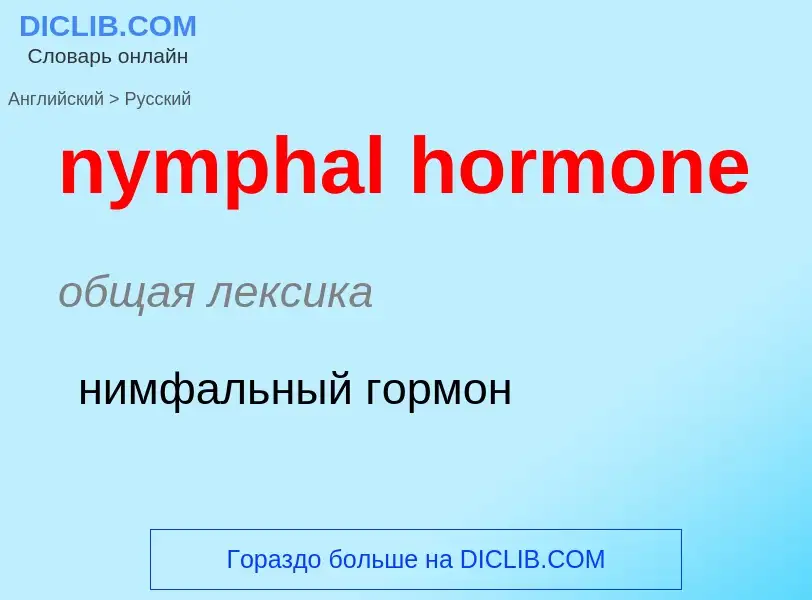Vertaling en analyse van woorden door kunstmatige intelligentie ChatGPT
Op deze pagina kunt u een gedetailleerde analyse krijgen van een woord of zin, geproduceerd met behulp van de beste kunstmatige intelligentietechnologie tot nu toe:
- hoe het woord wordt gebruikt
- gebruiksfrequentie
- het wordt vaker gebruikt in mondelinge of schriftelijke toespraken
- opties voor woordvertaling
- Gebruiksvoorbeelden (meerdere zinnen met vertaling)
- etymologie
nymphal hormone - vertaling naar russisch
общая лексика
нимфальный гормон
медицина
высвобождающий гормон соматотропного гормона
общая лексика
соматолиберин
фактор
стимулирующий выделение гормона роста
Wikipedia
Anti-Müllerian hormone (AMH), also known as Müllerian-inhibiting hormone (MIH), is a glycoprotein hormone structurally related to inhibin and activin from the transforming growth factor beta superfamily, whose key roles are in growth differentiation and folliculogenesis. In humans, it is encoded by the AMH gene, on chromosome 19p13.3, while its receptor is encoded by the AMHR2 gene on chromosome 12.
AMH is activated by SOX9 in the Sertoli cells of the male fetus. Its expression inhibits the development of the female reproductive tract, or Müllerian ducts (paramesonephric ducts), in the male embryo, thereby arresting the development of fallopian tubes, uterus, and upper vagina. AMH expression is critical to sex differentiation at a specific time during fetal development, and appears to be tightly regulated by nuclear receptor SF-1, transcription GATA factors, sex-reversal gene DAX1, and follicle-stimulating hormone (FSH). Mutations in both the AMH gene and the type II AMH receptor have been shown to cause the persistence of Müllerian derivatives in males that are otherwise normally masculinized.
AMH is also a product of granulosa cells of the preantral and small antral follicles in women. As such, AMH is only present in the ovary until menopause. Production of AMH regulates folliculogenesis by inhibiting recruitment of follicles from the resting pool in order to select for the dominant follicle, after which the production of AMH diminishes. As a product of the granulosa cells, which envelop each egg and provide them energy, AMH can also serve as a molecular biomarker for relative size of the ovarian reserve. In humans, this is helpful because the number of cells in the follicular reserve can be used to predict timing of menopause. In bovine, AMH can be used for selection of females in multi-ovulatory embryo transfer programs by predicting the number of antral follicles developed to ovulation. AMH can also be used as a marker for ovarian dysfunction, such as in women with polycystic ovary syndrome (PCOS).


